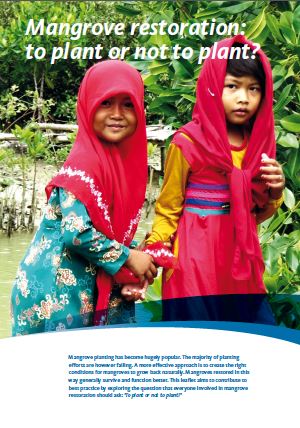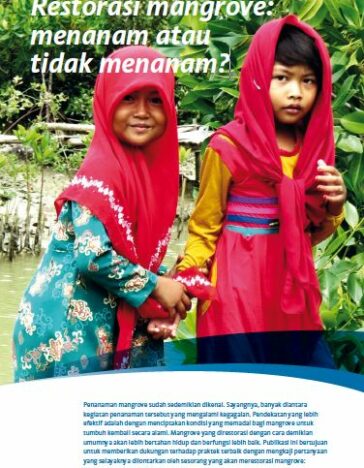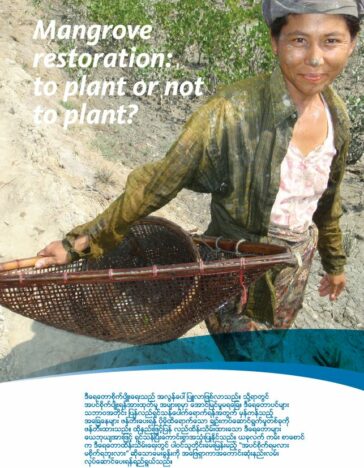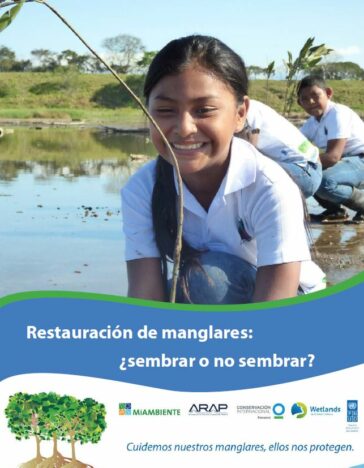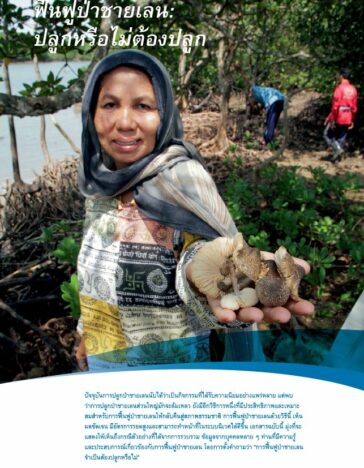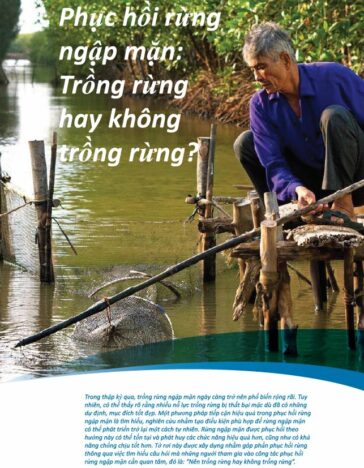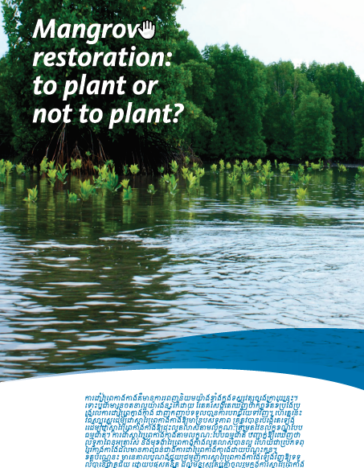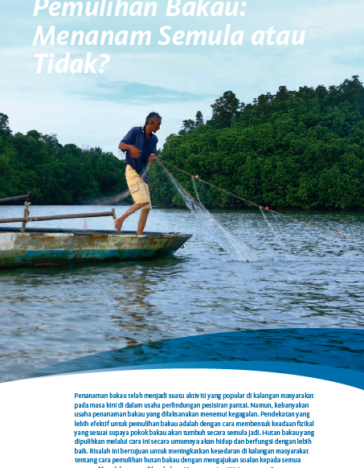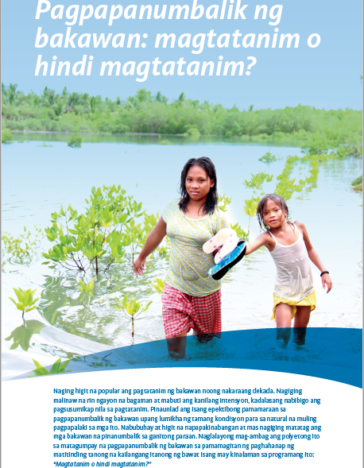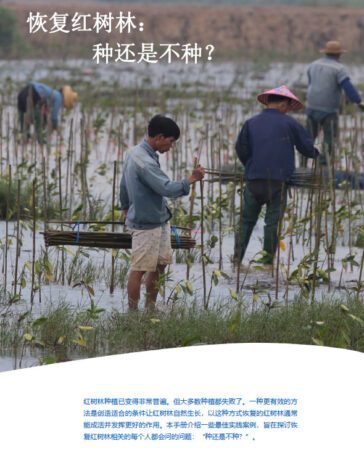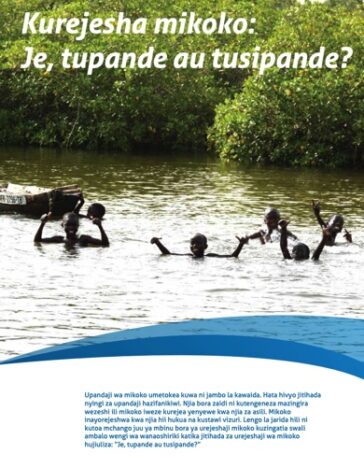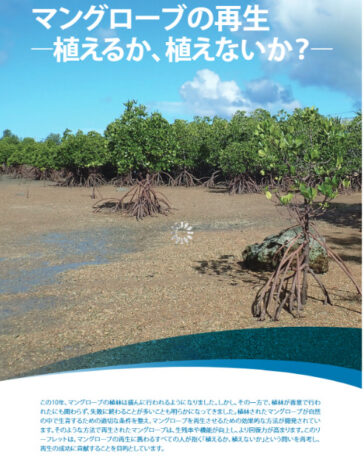
Mangrove restoration: to plant or not to plant?
Published on:
-
Coastal resilience
Mangrove planting has become hugely popular. The majority of planting efforts are however failing. A more effective approach is to create the right conditions for mangroves to grow back naturally. Mangroves restored in this way generally survive and function better. This publication aims to contribute to best practice by exploring the question that everyone involved in mangrove restoration should ask: ‘To plant or not to plant?’
Key messages:
- The world needs mangroves, but in many parts of the world they have been lost or degraded, along with their valuable services like coastal protection or fisheries enhancement. Restoration is necessary in many places.
- Mangrove planting is hugely popular, but the majority of planting efforts fail to restore functional mangrove forests and we can learn from these experiences.
Successful restoration results in the establishment of a sizeable, diverse, functional and self-sustaining mangrove forest that offers benefits for nature and people. - When the enabling biophysical and socioeconomic conditions are put back in place applying Ecological Mangrove Restoration principles, nature will do the rest. When that happens, species to site matching is optimal, resulting in better survival, faster growth, and a more diverse and resilient mangrove forest.
- In some cases, planting can assist or enrich the natural regeneration process. However, planting in non-mangrove habitat and areas showing natural mangrove recruitment needs to be avoided.
We are pleased to say that we have secured support for this project from two of our long-standing donors, the Turing Foundation and the Waterloo Foundation. However, we are still looking for partners to support this work. If you would like to find out more, please contact Femke Tonneijck at [email protected].

